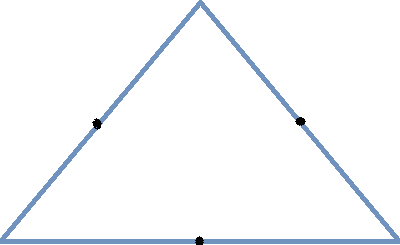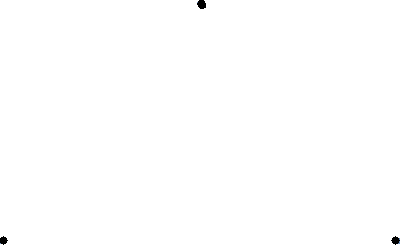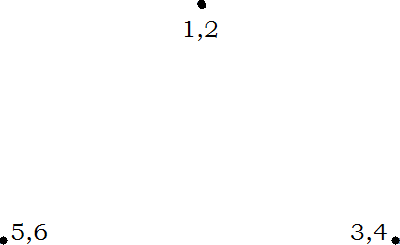
Explore 1.4 Ways to Create Order
Learning Objectives
By the time you have completed the 1.4 Introduction & Exploration Activities, you should be able to:
- Understand the meaning of the following terms/concepts and be able to identify examples of each: order, disorder, agent-designed construction, lawful self-assembly, emergent order.
- Understand how agent-designed assembly produces order and how lawful self-assembly produces order.
- Evaluate examples of ordered systems and identify how the order arose—through agent-designed assembly or through lawfully self-assembly.
Scientific Terms/Concepts
Terms: order, disorder, agent-designed construction, lawful self-assembly, emergent order
Define and give an example of each term:
Term:
Order
Definition:
Example:
Term:
Disorder
Definition:
Example:
Term:
Agent-designed Construction
Definition:
Example:
Term:
Lawful Self-assembly
Definition:
Example:
Term:
Emergent Order
Definition:
Example:
Agent Designed & Lawful Self-Assembly
Watch this video (3.5 minutes) on self-assembly:
How Order Arises
Activity Part 1 (of 3)
Instructions. Take out a blank piece of paper and pencil/pen and reproduce the image below, exactly as it appears. There's no need to take a lot of time.

Analyze the Order
Now, take a moment to think about what just happened, where the order came from. Your paper was blank before you began drawing, but after you finished there was a pattern on the paper (your drawing of the image above). Analyze the process that produced the pattern by answering the following questions in the box below (number each of your answers):
- Was there a designer (agent) involved?
- Was there a builder (agent) involved?
- How did the builder know what pattern (order) to create?
- Was the process involved in creating the order most similar to the process involved in producing the house, the office chair, or the rock candy? Justify your answer.
Activity Part 2 (of 3)
Follow the instructions below:
- On a separate sheet of paper, draw a large triangle with equal sides that points up, like this:

- Now, draw a small dot on each side of the triangle, halfway between the corners, like this:

- Okay, now connect the dots, like this:

- Can you see that your original triangle has four new triangles inside it: three that 'point' up and one triangle (with all-black sides) that 'points' down?
- Now, repeat steps 2 & 3 in each of the upwards pointing triangles—but not in the downward facing triangle.
- Okay, can you see that your drawing now has more upward and downward facing triangles?
- Repeat steps 2 & 3 in each of the new upwards pointing triangles—but not in any of the downward facing triangles.
- What shape did following these instructions produce? Click on the 'Result' button below to compare your image to the one we created. Our image will be a little more complicated, because we followed steps 2&3 many more times than you did.
Analyze the Order
Now, take a moment to think about what just happened, where the order came from. Your paper was blank before you began drawing, but after you finished there was a pattern on the paper (your drawing). Analyze the process that produced the pattern by answering the following questions in the box below (number each of your answers):
- Was there a designer (agent) involved?
- Was there a builder (agent) involved?
- How did the builder know what pattern (order) to create?
- Was the process involved in creating the order most similar to the process involved in producing the house, the office chair, or the rock candy? Justify your answer.
Activity Part 3 (the last one)
This part of the activity is often call The Chaos Game. Enjoy!
Instructions:
- On a clean sheet of paper, draw three dots. You can place the dots anywhere, but things get difficult for you if you put the dots near each other. So, spread them out. The image below shows one way to do it. In the example below, we place the dots at the corners of an equilateral triangle, but you don't need to do that. You can place them anywhere, so long as they're spread out. As you do this, note that there is absolutely no way for us to predict where you've placed your three dots. In other words, from our perspective, your placement of the dots is completely random.

- OK, label each dot, like this: label one dot "1-2", another dot "3-4", and the last dot "5-6". The image below shows you how we did it. Again, you can select which of your dots is labeled "1-2", etc. in any way you like. Since you'll label your dots however you choose, there is absolutely no way for us to know how you labeled the dots—which makes your labeling completely random, from our perspective.

- Now (and this is the final step before you begin playing the game), place an unlabeled 'seed' dot anywhere on your piece of paper ... anywhere! The image below shows you where we placed our seed dot. We were boring and placed our seed dot 'inside' our labeled dots, but you don't have to follow our example. Place your seed dot wherever you please. Obviously, once again, you've placed your dot randomly and there is absolutely no way for us to know where you placed it. We call this a 'seed dot' because you're going to erase it after you place the next dot (in step 5).

- Okay, this is where the game begins. Roll your die or click on the 'Generate Random Number' button below. Before proceeding, however, recognize that the die (or button) represents another random part of this processes. There's absolutely no way for us to know which number you'll roll (or generate) each time.
- Next, identify the dot labeled with the the number you just rolled (or generated with the button). Now, draw a dot halfway between your seed dot and the dot labeled with the number you rolled (or generated with the button below). The image below shows our example. We rolled a '2', so we placed the new dot halfway between the seed dot and the dot labeled '1-2'. Make sense? Don't draw the green line like we; we drew it to illustrate the concept. Don't draw any lines. Now that you've placed the first 'game' dot, erase the seed dot. You don't need it any more. After erasing the seed dot you won't erase anything else, you'll just keep drawing new dots.

- From here on out, you just keep rolling your die (or using the button) and placing a dot halfway between the last dot you drew and the dot labeled with the number you rolled (or generated). As you go, keep a tally of the number of dots you've made. Stop once you've made 40 dots. (Of course, you can do more if you please, but the process becomes rather monotonous.)
#
Analyze what you've done
Once you've made at least 40 dots, think about the process. Essentially every aspect of the procedure was random: where you placed your original dots, how you labeled them, where you placed your seed dot, and the numbers you rolled using your 6-sided die (or generated with the button). The entire procedure contained only one non-random aspect, this rule: "place the next dot halfway between the last dot and the number you just rolled (or generated)".
With that in mind, make a prediction about what you'd produce if you continued making more dots. In other words, what would you produce if you made a thousand dots? or a million? ...Would you end up with a basically solid triangle, with points defined by your original three dots? Or would you end up with something else? In the box below, record your prediction.
After making your prediction, click on the 'Result' button below to see what our example would look like had we placed 100,000 dots.
Ordered Systems
Houses as Ordered Systems
Figure 1.4.2 illustrates the construction of a house, from design & blueprint creation through each construction stage— foundation work, framing, plumbing-electrical-HVAC, and exterior & interior finish work. As part of your analysis, answer the following questions in the “1.4 Analyzing Ordered Systems Questions” ‘quiz’ in iLearn.

- Is the system ordered, and what pattern(s) comprises that order?
- Can the ordered system be used to accomplish something, i.e., does it have a function or purpose?
- What are the component parts that have been arranged into a pattern(s)?
- How do the parts interact—can they act for themselves or must they be acted upon?
- Is an agent(s)—an individual or entity—responsible for designing and/or building the order or does the order spontaneously self-assemble?
- Can the ordered system fulfill its use, function, or purpose at each stage of construction, or can it do so only after the system has been completely assembled?
Chairs as Ordered Systems
Figure 1.4.3 illustrates the assembly of an office chair. Answer the questions below in the “1.4 Analyzing Ordered Systems Questions” ‘quiz’ in iLearn.

- Is the system ordered, and what pattern(s) comprises that order?
- Can the ordered system be used to accomplish something, i.e., does it have a function or purpose?
- What are the component parts that have been arranged into a pattern(s)?
- How do the parts interact—can they act for themselves or must they be acted upon?
- Is an agent(s)—an individual or entity—responsible for designing and/or building the order or does the order spontaneously self-assemble?
- Can the ordered system fulfill its use, function, or purpose at each stage of construction or can it do so only after the system has been completely assembled?
Rock Candy Crystals as Ordered Systems
Figure 1.4.4 illustrates the kind of rock candy you may have made and enjoyed as a child. If you’ve never done this, you may enjoy doing it sometime soon. It’s interesting, tasty, and simple: 1) Heat water on the stove and dissolve as much sugar into the water as possible, 2) Allow the sugar-water to cool, and pour it into a cup or jar, 3) Place a string (or similar) in the sugar water by suspending it from a pencil (or similar) placed across the mouth of the cup or jar, 4) Wait—as the water evaporates, sugar crystals will form on the string (and sometimes along the edge of the container). Answer the questions below in the “1.4 Analyzing Ordered Systems Questions” ‘quiz’ in iLearn.

- Is the system ordered, and what pattern(s) comprises that order?
- Can the ordered system be used to accomplish something, i.e., does it have a function or purpose?
- What are the component parts that have been arranged into a pattern(s)?
- How do the parts interact—can they act for themselves or must they be acted upon?
- Is an agent(s)—an individual or entity—responsible for designing and/or building the order or does the order spontaneously self-assemble?
- Can the ordered system fulfill its use, function, or purpose at each stage of construction or can it do so only after the system has been completely assembled?
Our Heavenly Father has repeatedly told us in the scriptures that all things must be done in order. D&C 88:119 tells us to “establish a house of order, a house of God.” All that He has created is His house, His domain. We would expect that all of His creations would also follow that things are done in order.







